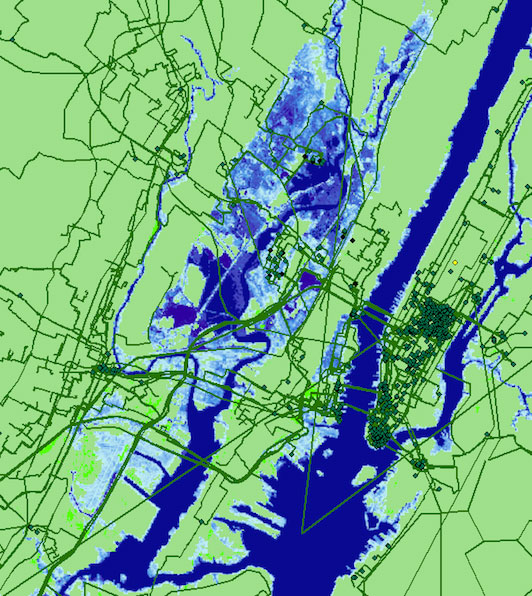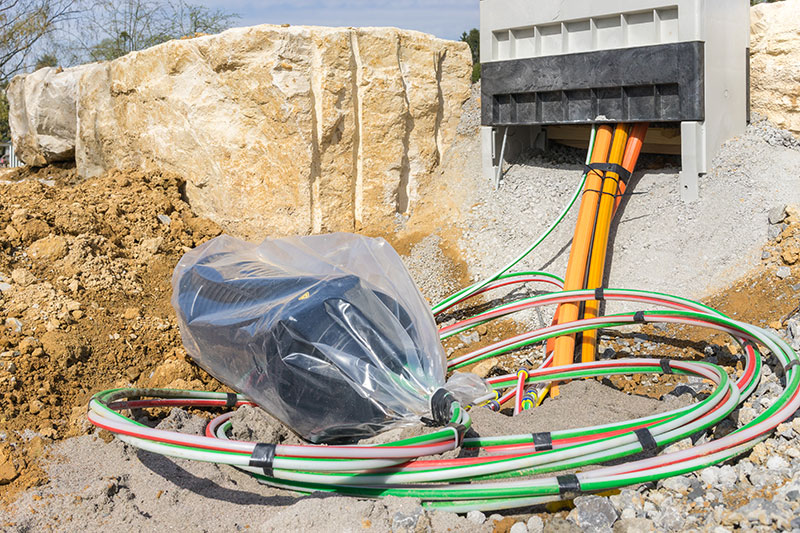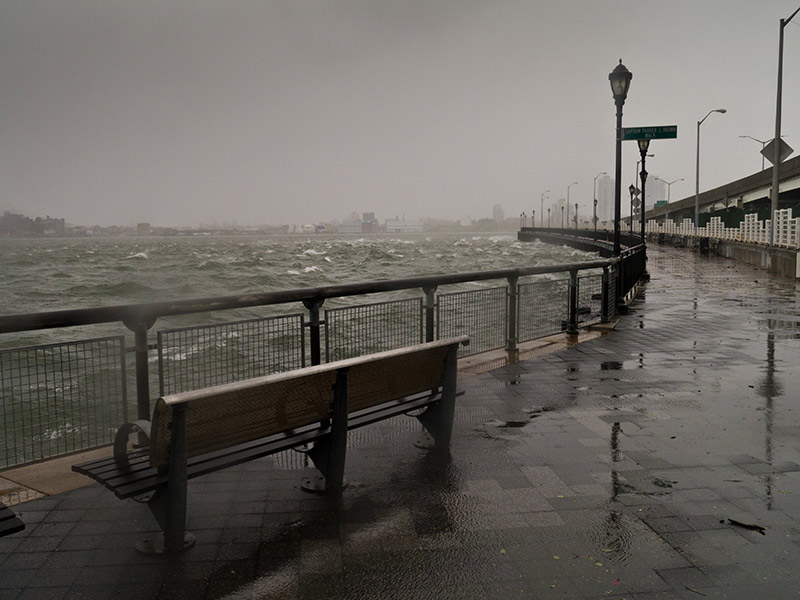
20th July 2018 Rising sea levels threaten the Internet A study by the University of Wisconsin-Madison concludes that thousands of miles of buried Internet infrastructure could be damaged or destroyed by rising sea levels within 15 years.
Thousands of miles of buried fibre optic cable in densely populated coastal regions of the United States may soon be inundated by rising seas, according to a new study by researchers at the University of Wisconsin–Madison and the University of Oregon. The research, presented this week at a meeting of Internet network researchers, reveals that critical communications infrastructure may be submerged by rising seas in as soon as 15 years, according to senior author, Paul Barford, a UW–Madison professor of computer science. "Most of the damage that's going to be done in the next 100 years will be done sooner than later," says Barford, an authority on the "physical internet" – the buried fibre optic cables, data centres, traffic exchanges and termination points that are the nerve centres, arteries and hubs of the vast global information network. "That surprised us. The expectation was that we'd have 50 years to plan for it. We don't have 50 years." This study is the first assessment of risk of climate change to the Internet. It suggests that by the year 2033, more than 4,000 miles (6,400 km) of buried fibre optic conduit will be underwater and more than 1,100 traffic hubs will be surrounded by water. The most susceptible U.S. cities are New York, Miami and Seattle, but the effects would not be confined to those areas and would ripple across the Internet, potentially disrupting global communications.
The peer-reviewed study combined data from the Internet Atlas – a comprehensive map of the Internet's physical structure – with projections of sea level incursion from the National Oceanic and Atmospheric Administration (NOAA). The study, which only evaluated risks to the United States, was shared with academic and industry researchers at the Applied Networking Research Workshop, a meeting of the Association for Computing Machinery, the Internet Society and the Institute of Electrical and Electronics Engineers. Much of this infrastructure is buried and follows long-established rights of way, typically paralleling highways and coastlines, says Barford: "When it was built 20–25 years ago, no thought was given to climate change." Many of the conduits at risk are already close to sea level – only a slight rise in ocean levels due to melting polar ice and thermal expansion will be needed to expose fibre optic cables to sea water. Hints of the problems to come, says Barford, can be seen in the catastrophic storm surges and flooding that accompanied hurricanes Sandy and Katrina.
Buried fibre optic cables are designed to be water-resistant, but unlike marine cables that ferry data from continent to continent under the ocean, they are not completely waterproof. Risk to the physical internet, says Barford, is coupled to the large population centres that exist on the coasts, which also tend to be the same places where the transoceanic marine cables that underpin global communication networks come ashore: "The landing points are all going to be underwater in a short period of time," he notes. Moreover, much of the data that transits the Internet tends to converge on a small number of fibre optic strands that lead to large population centres like New York, one of the more vulnerable cities identified in the study. The impact of mitigation, such as sea walls, is difficult to predict. "The first instinct will be to harden the infrastructure," Barford says. "But keeping the sea at bay is hard. We can probably buy a little time – but in the long run, it's just not going to be effective." In addition to looking at the risk to local and long-haul infrastructure in the nation's coastal areas, the study examined the risk to the buried assets of individual Internet service providers. It found the networks of CenturyLink, Inteliquent and AT&T to be at highest risk. The findings of the study, argues the Wisconsin computer scientist, serve notice to industry and government: "This is a wake-up call. We need to be thinking about how to address this issue."
Comments »
If you enjoyed this article, please consider sharing it:
|









